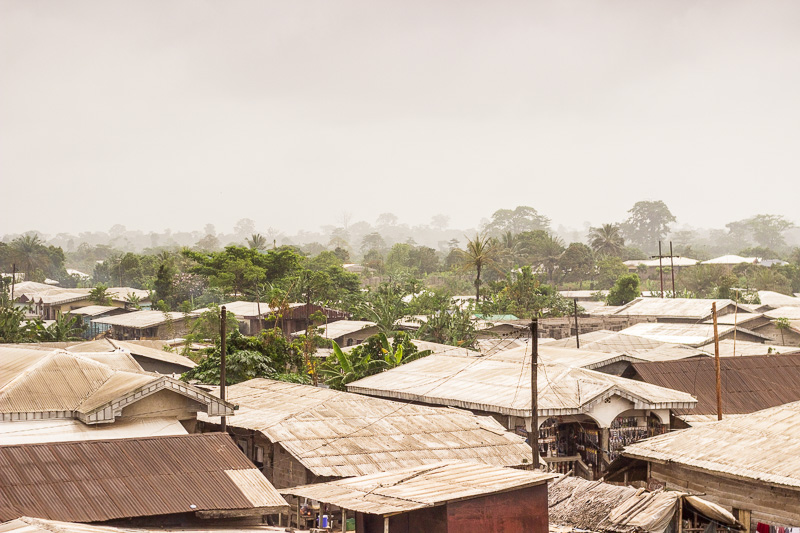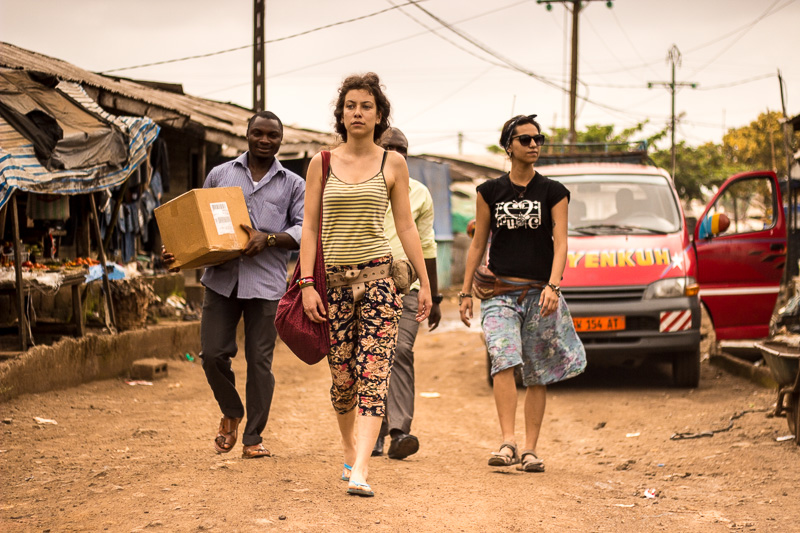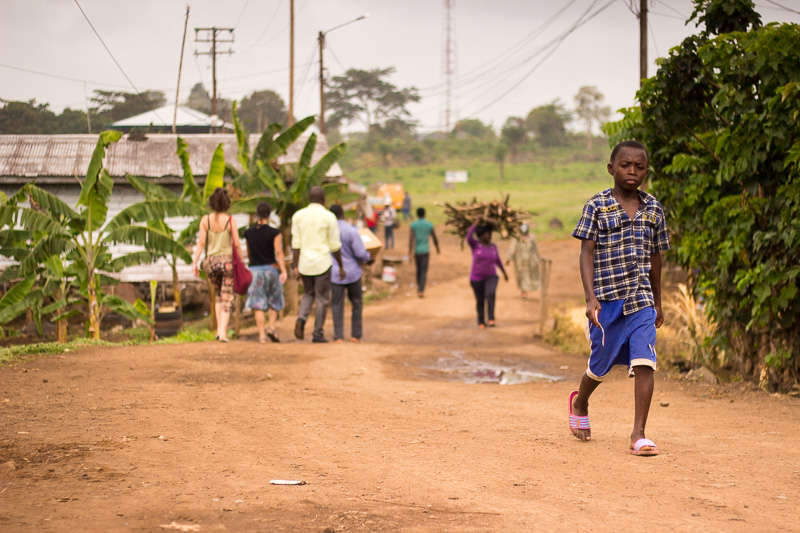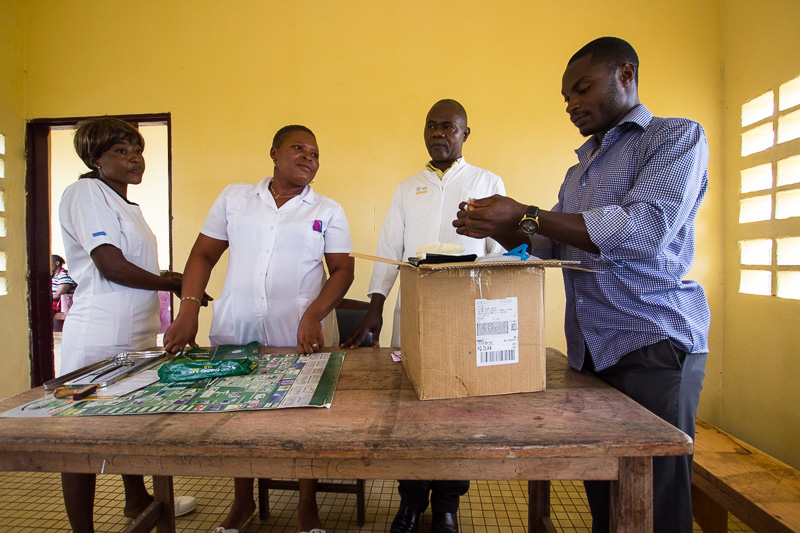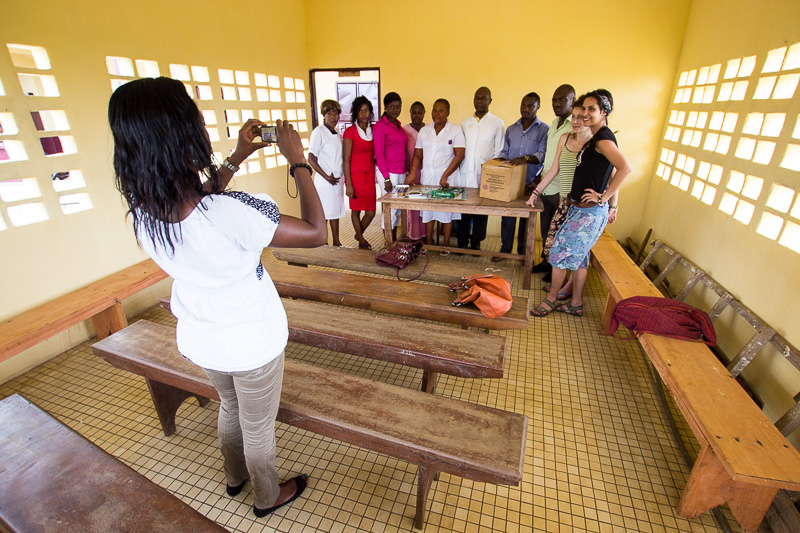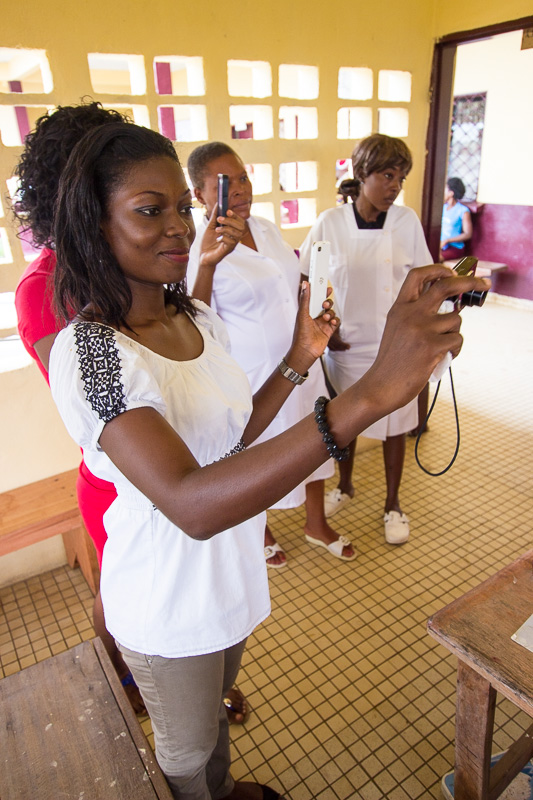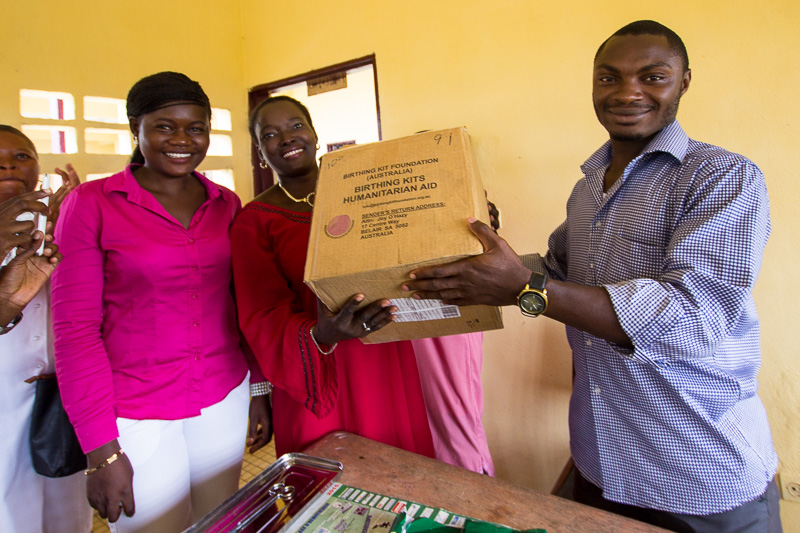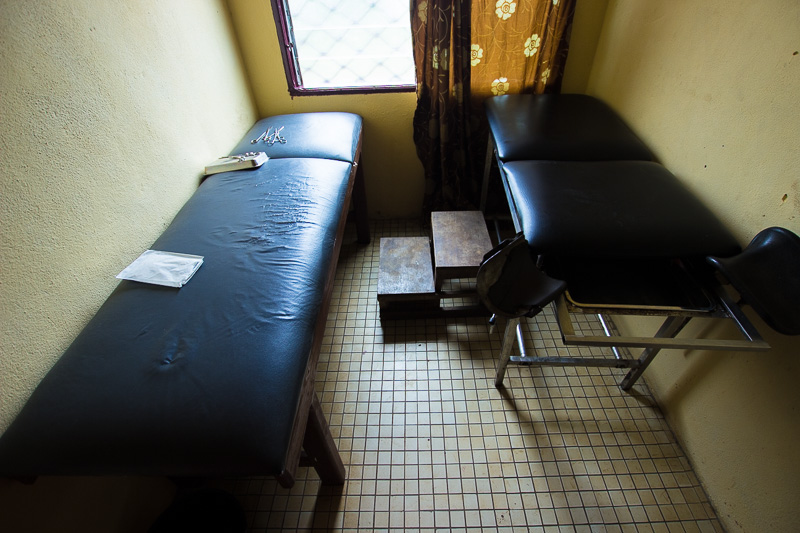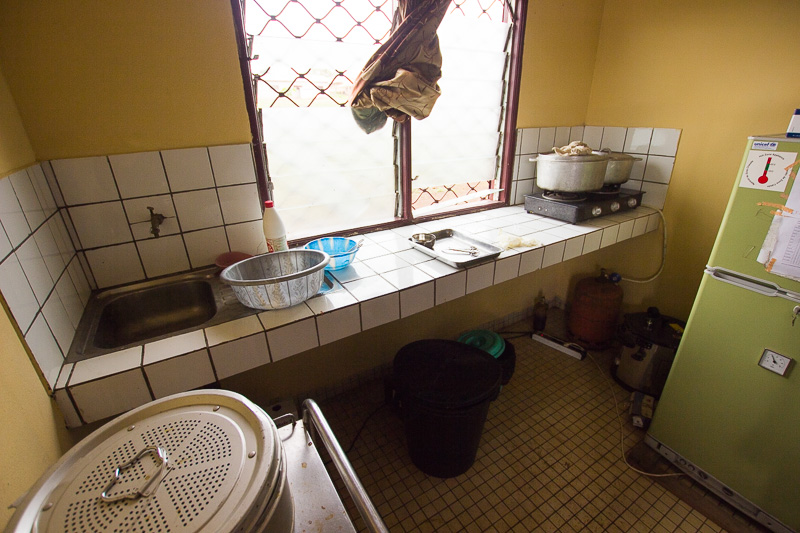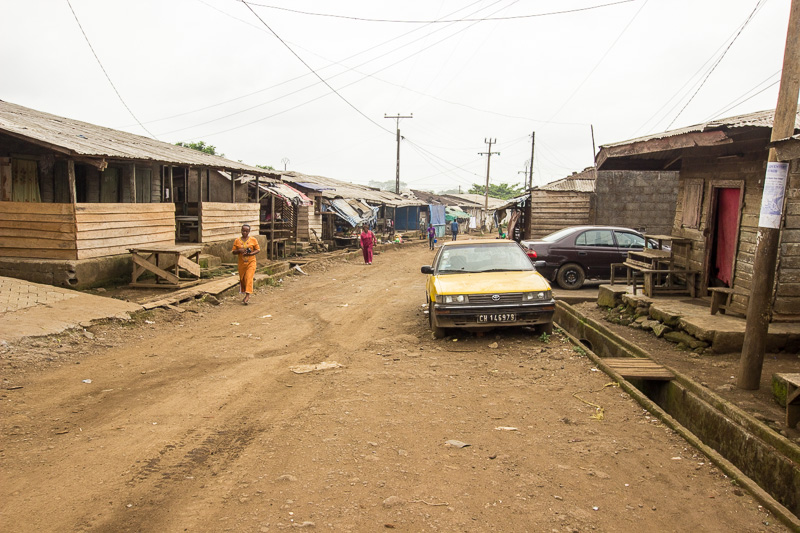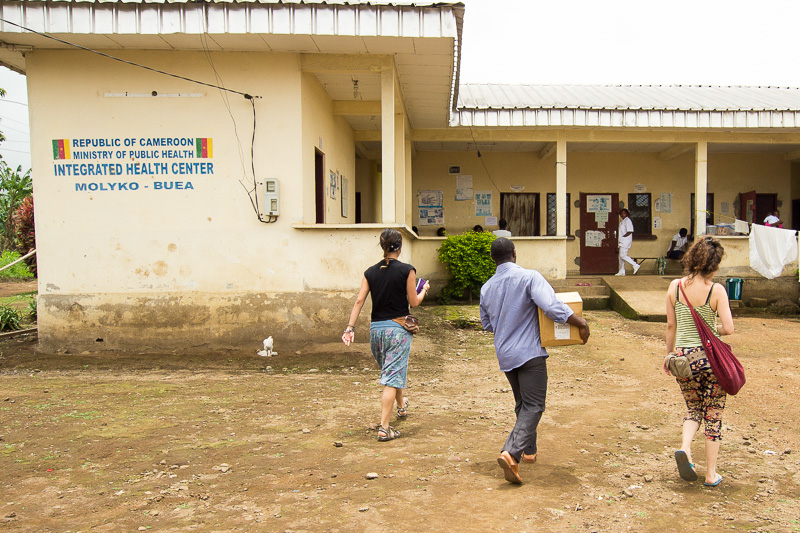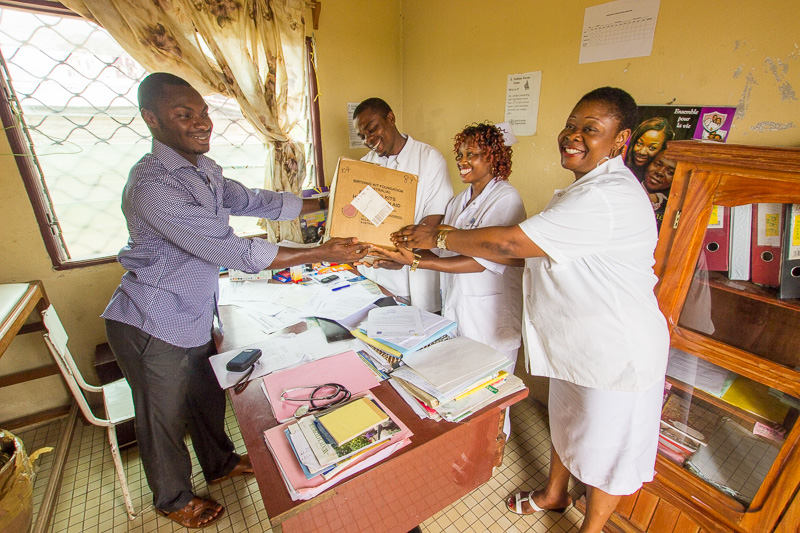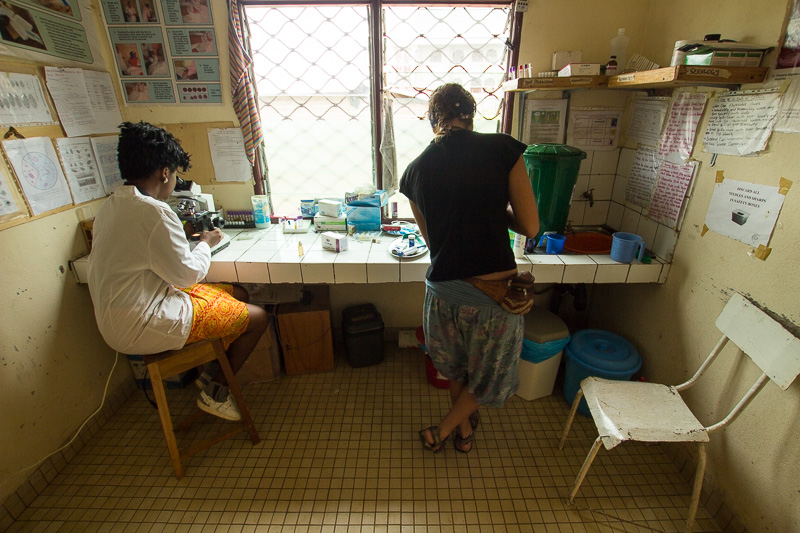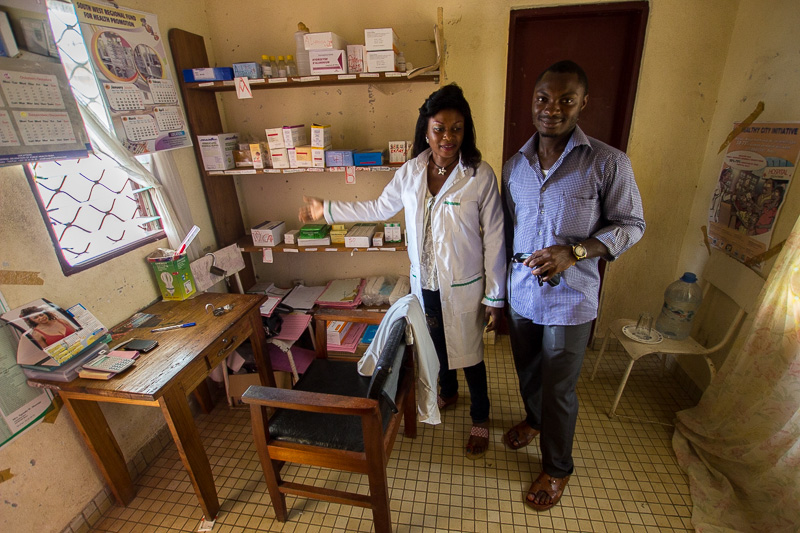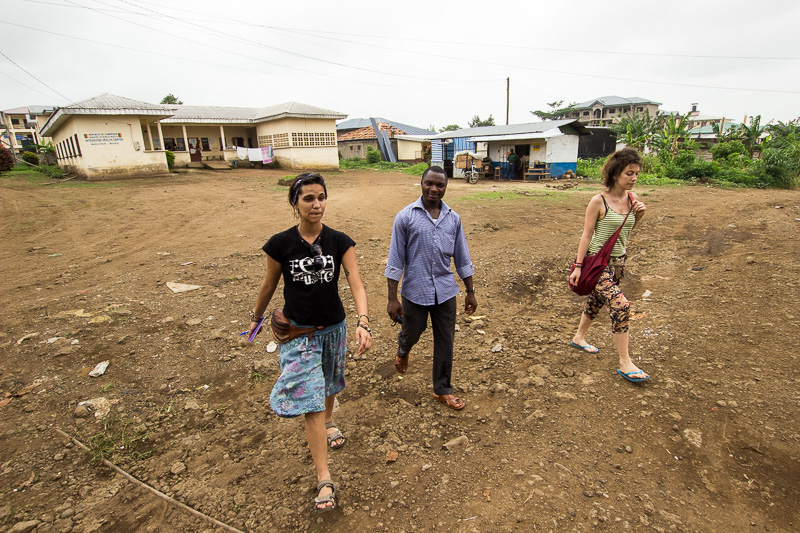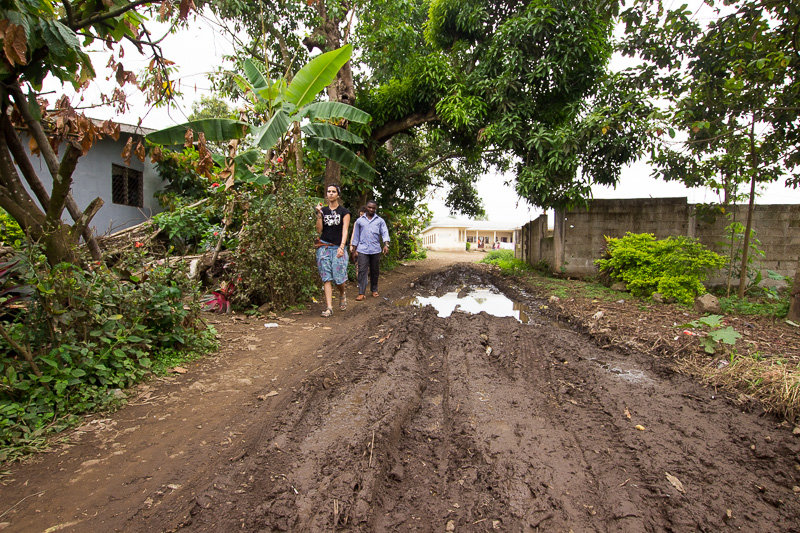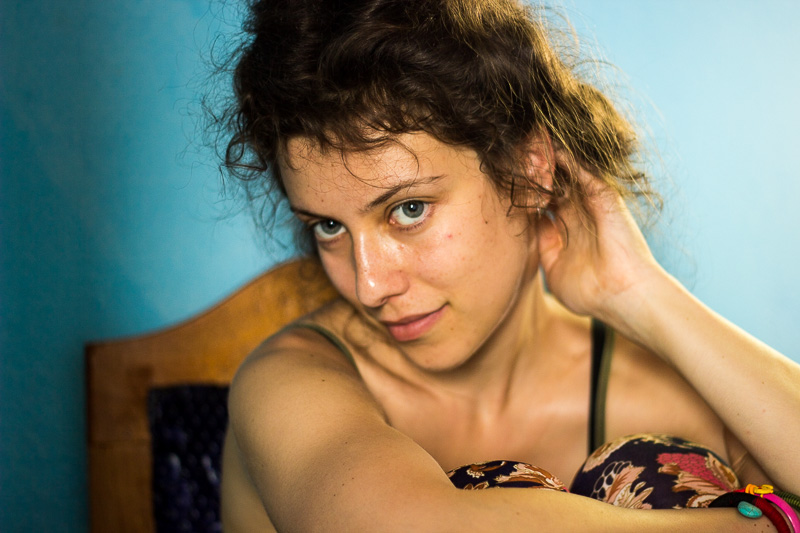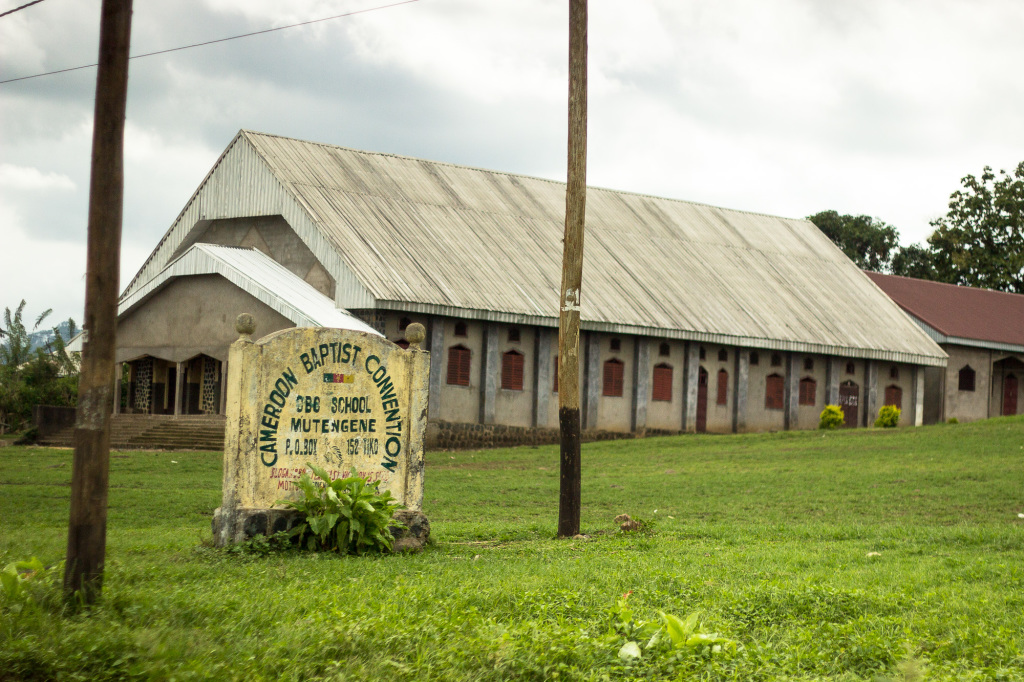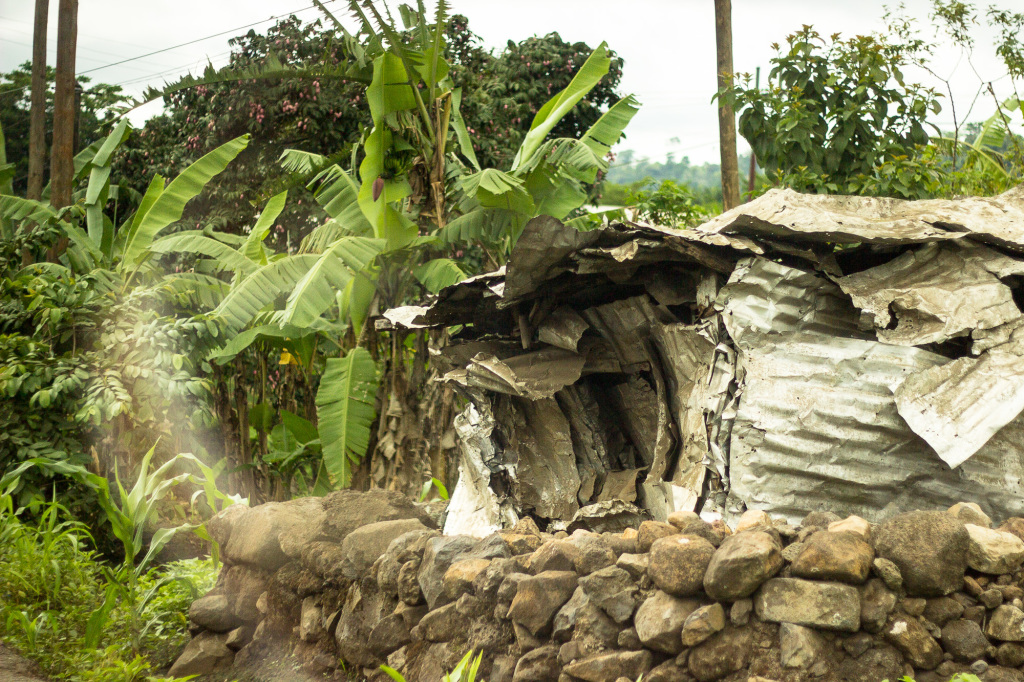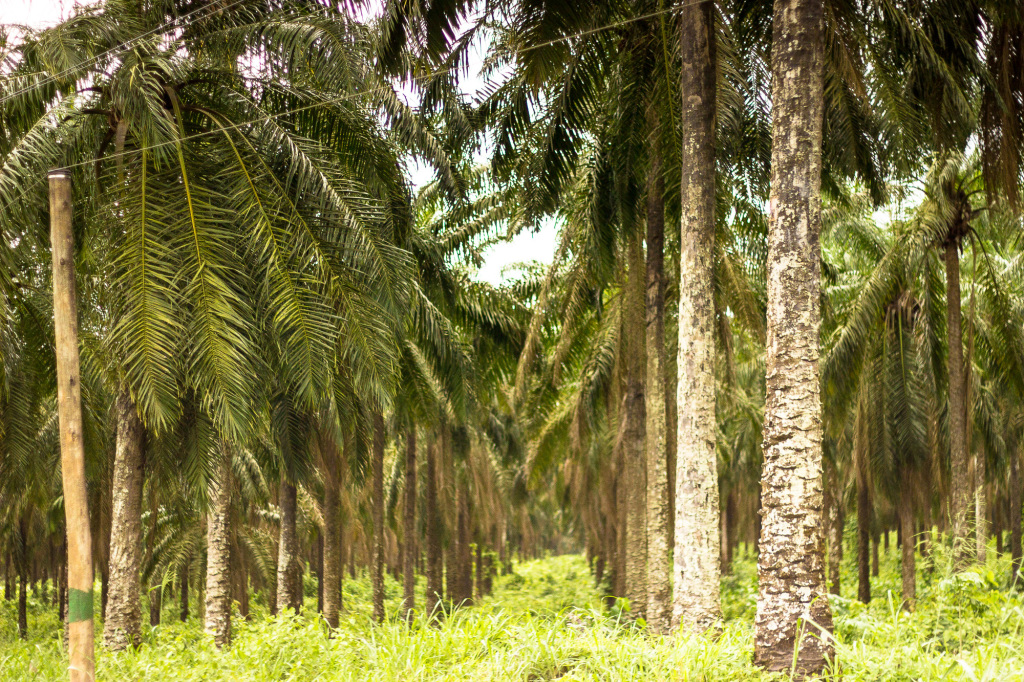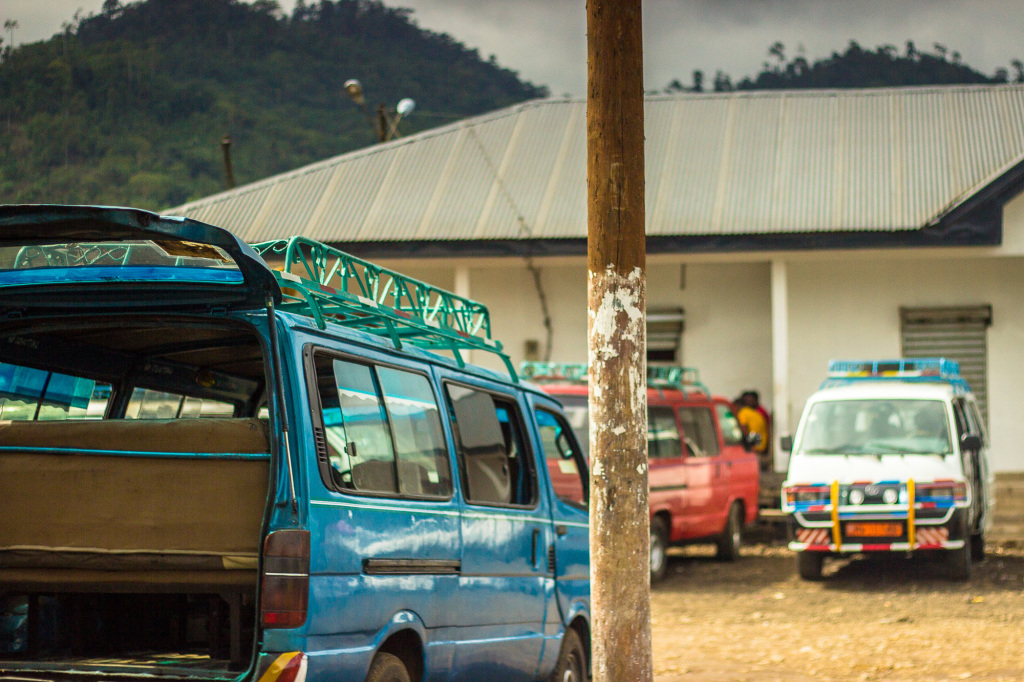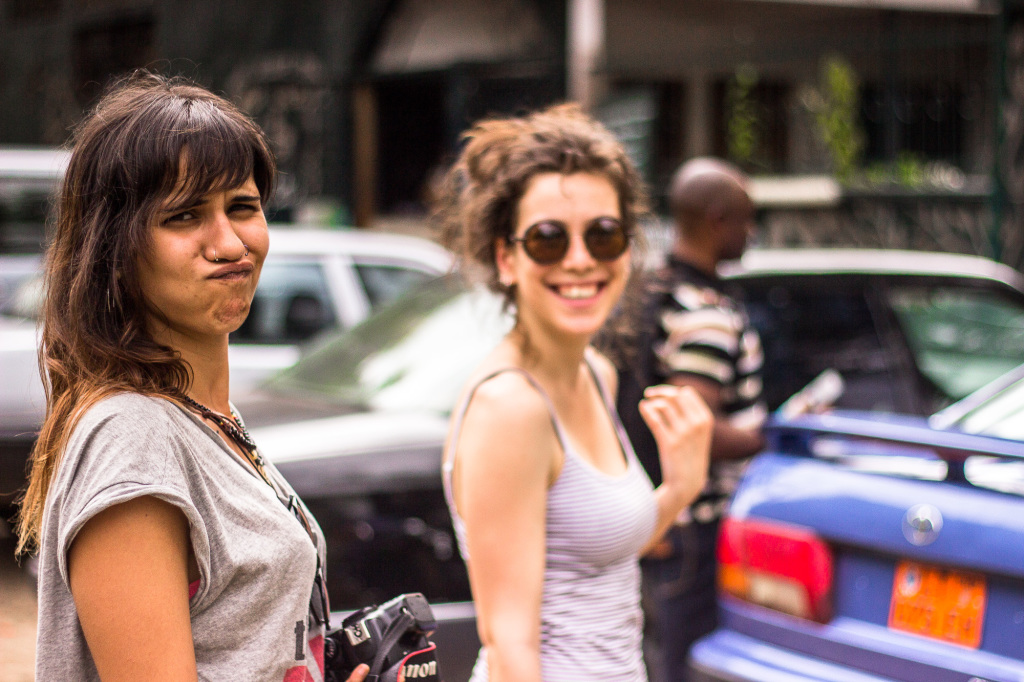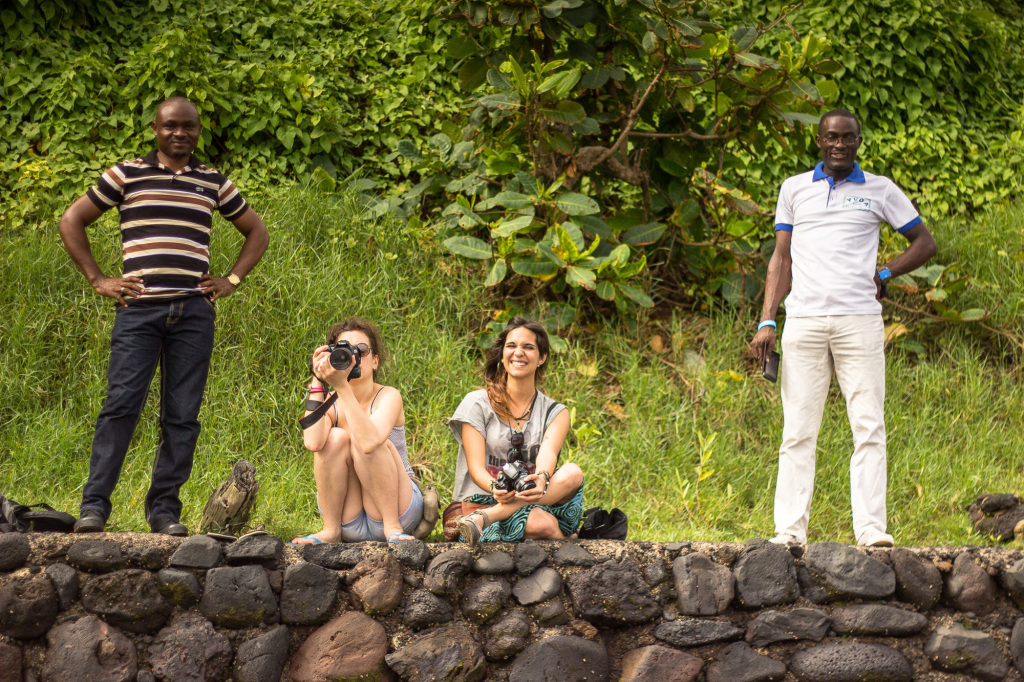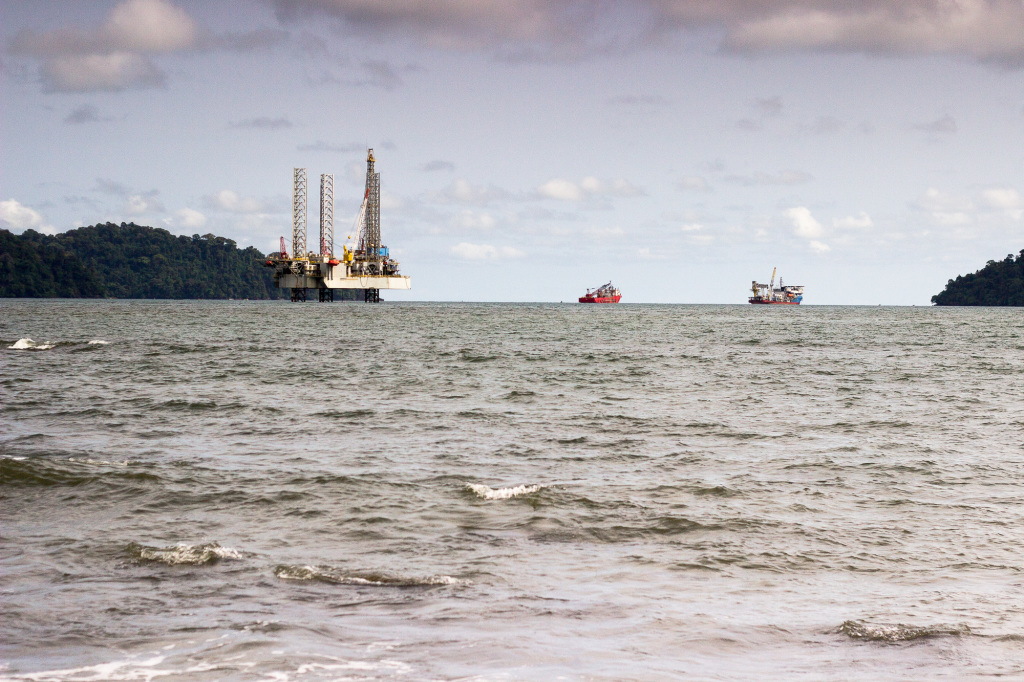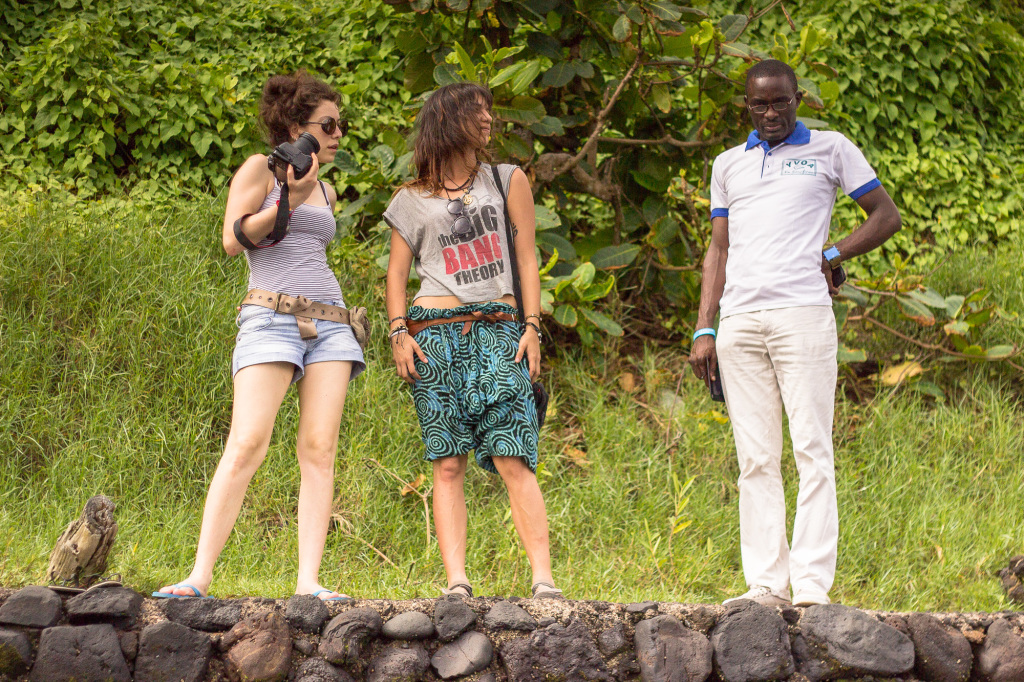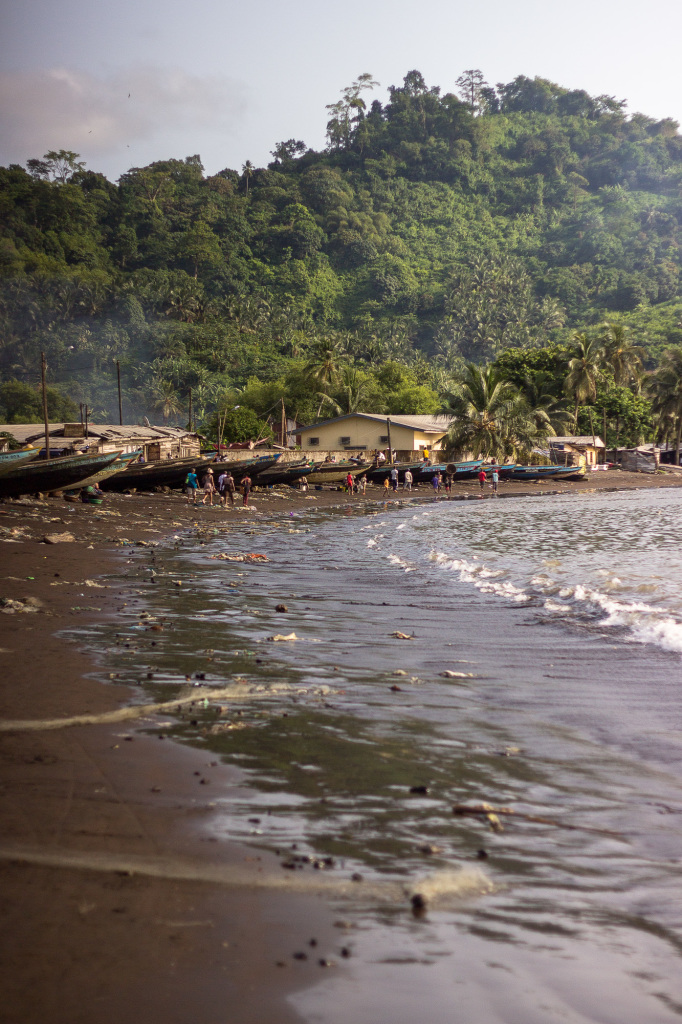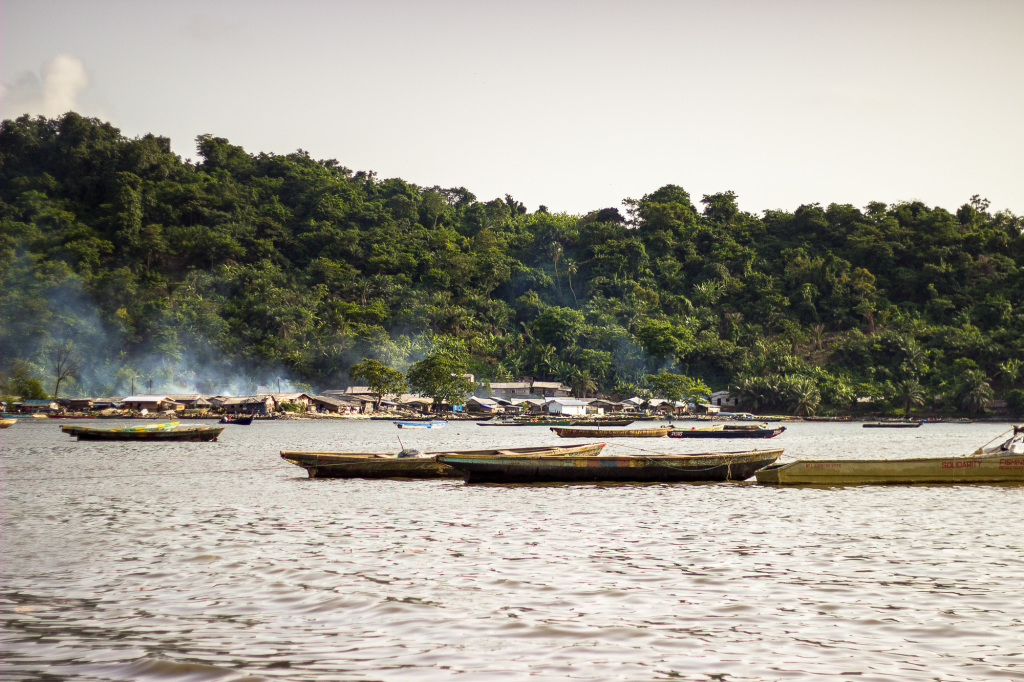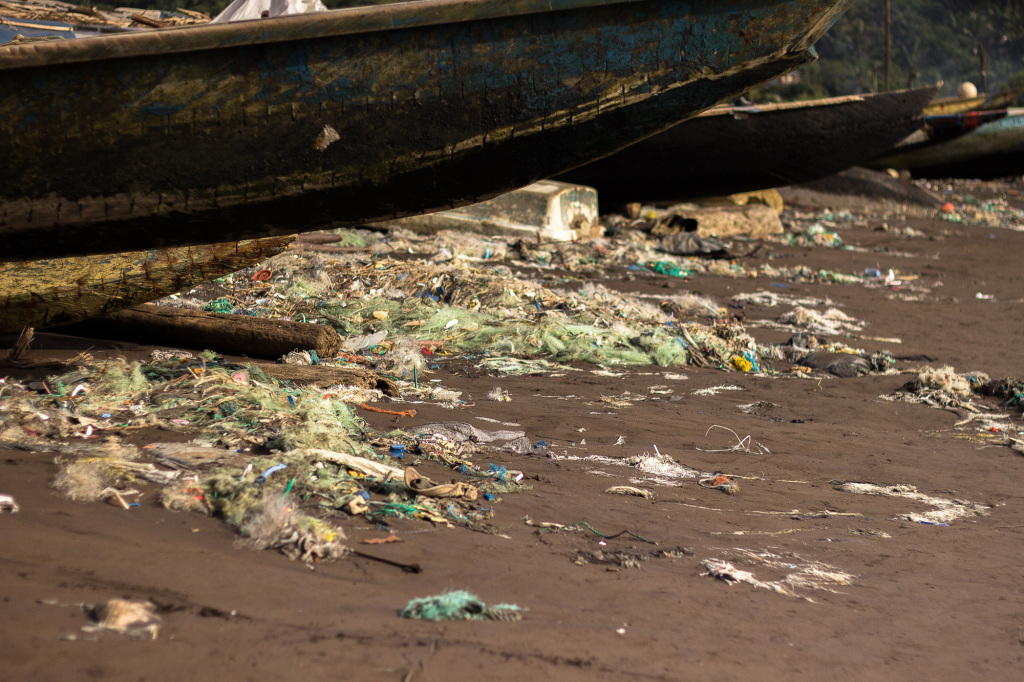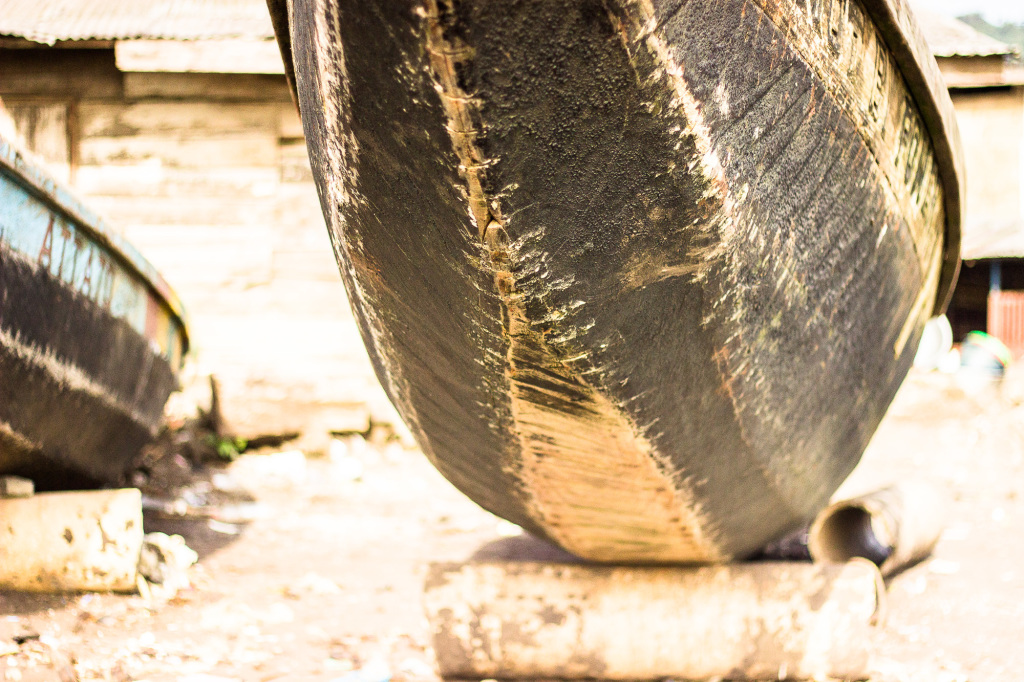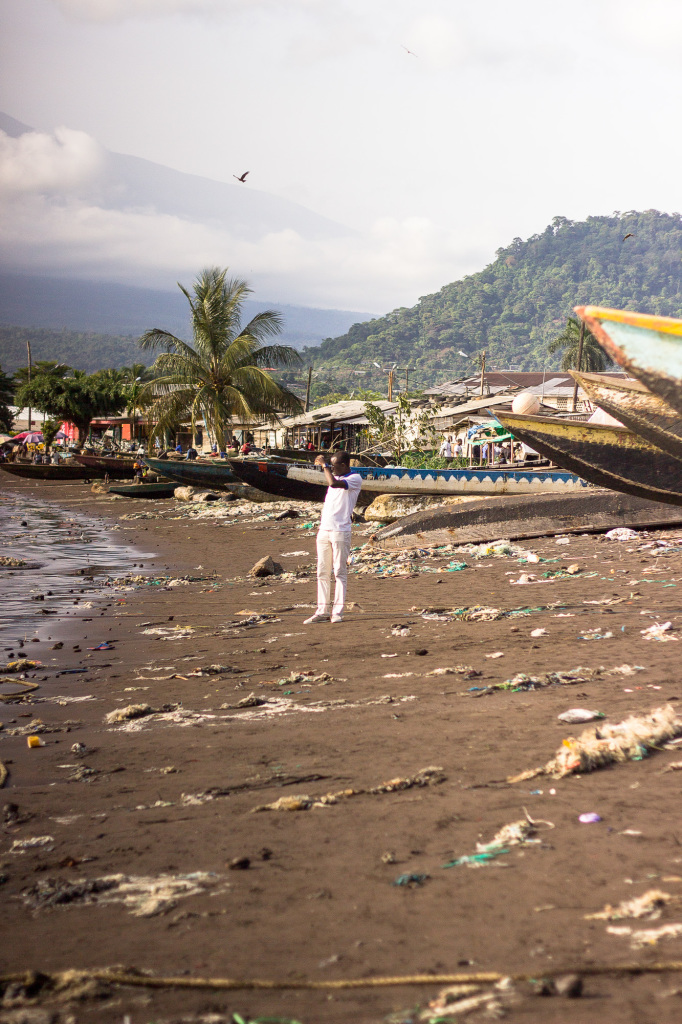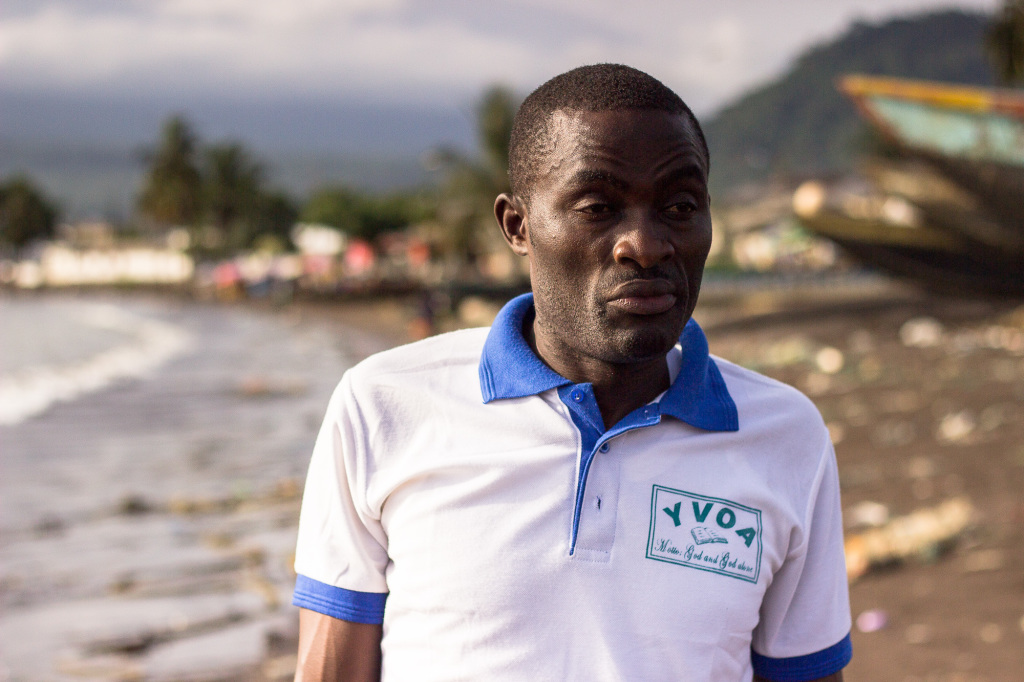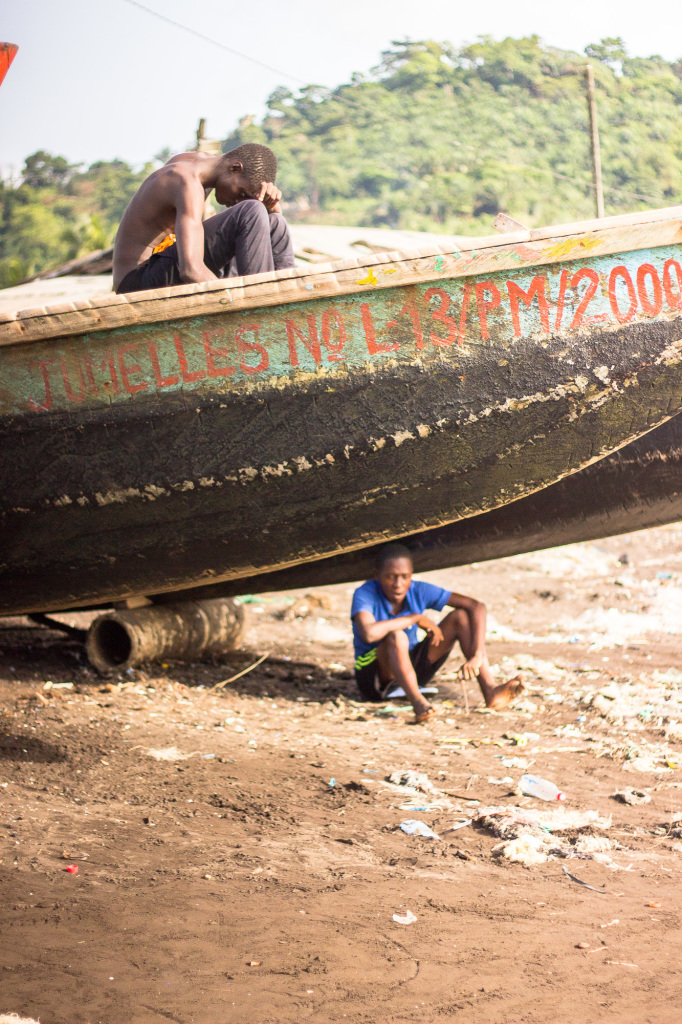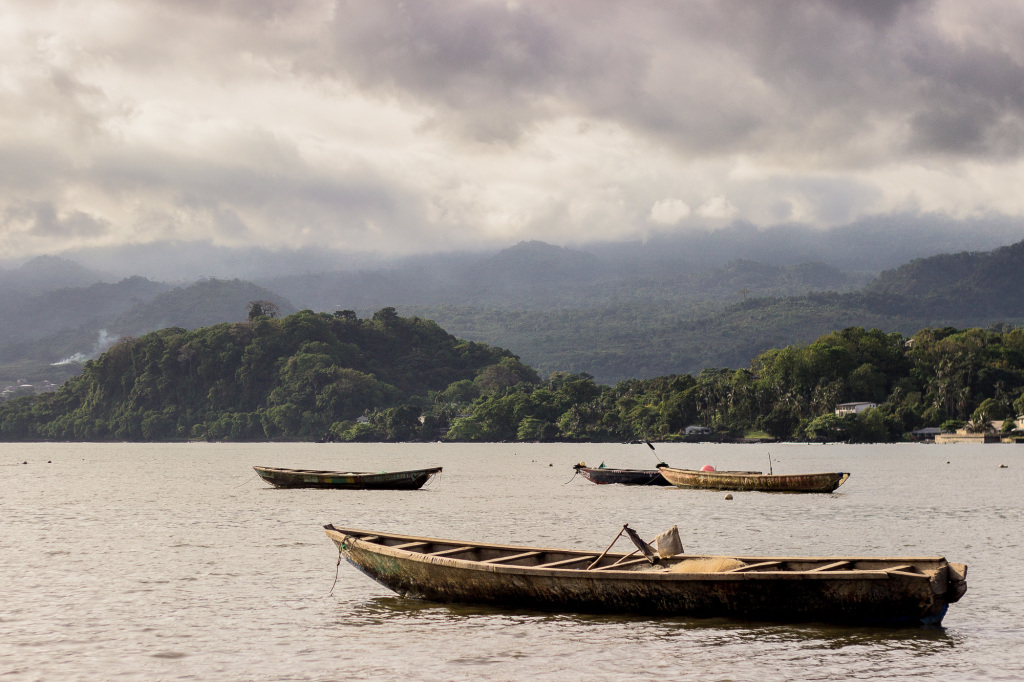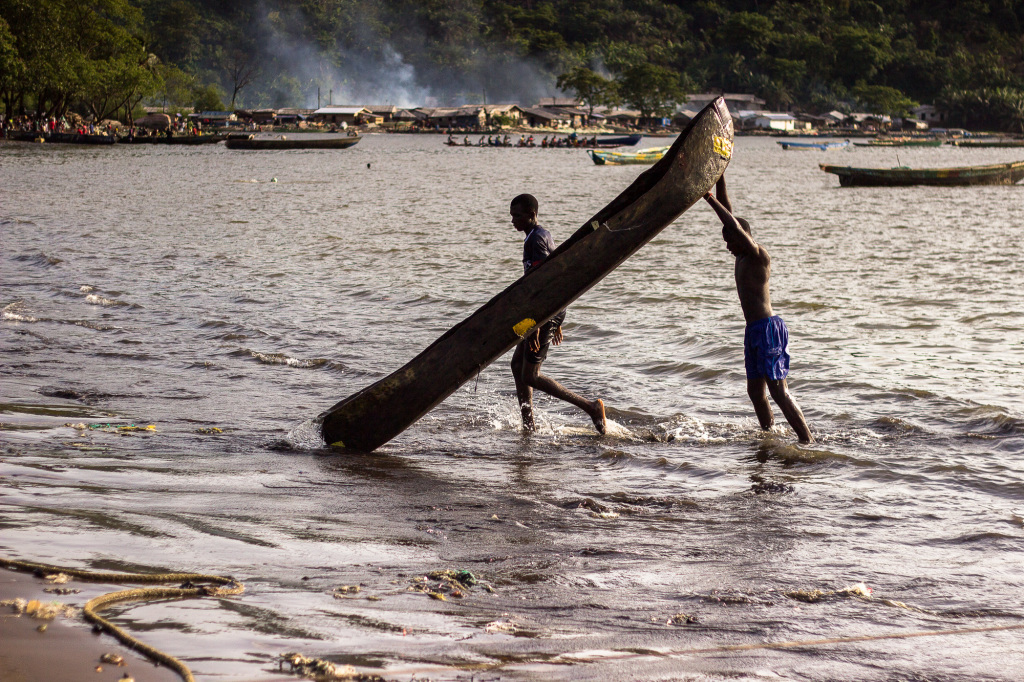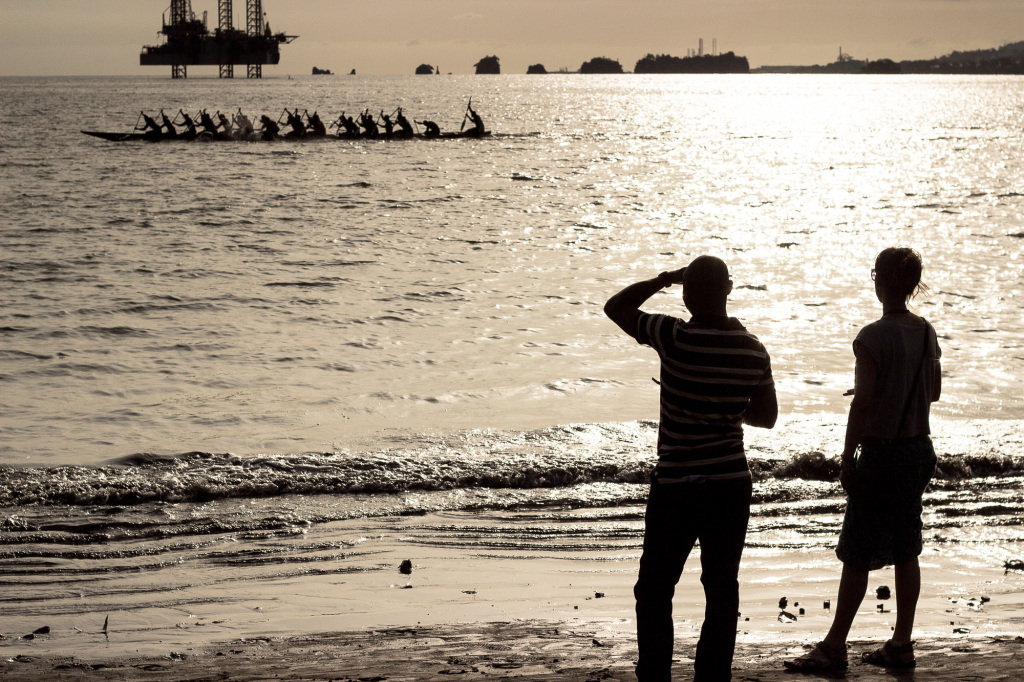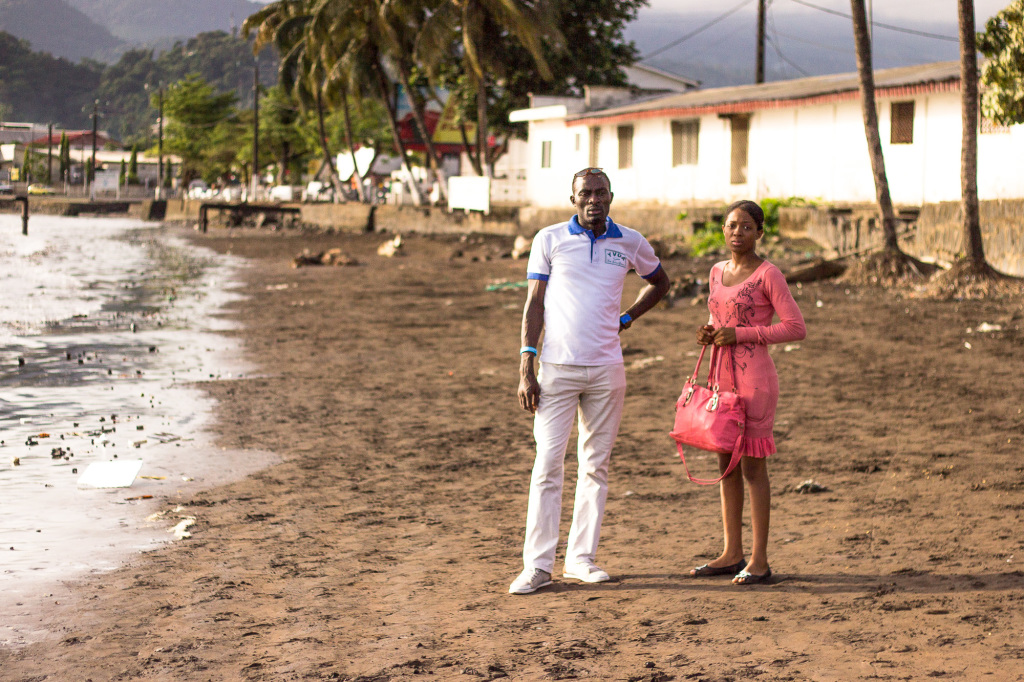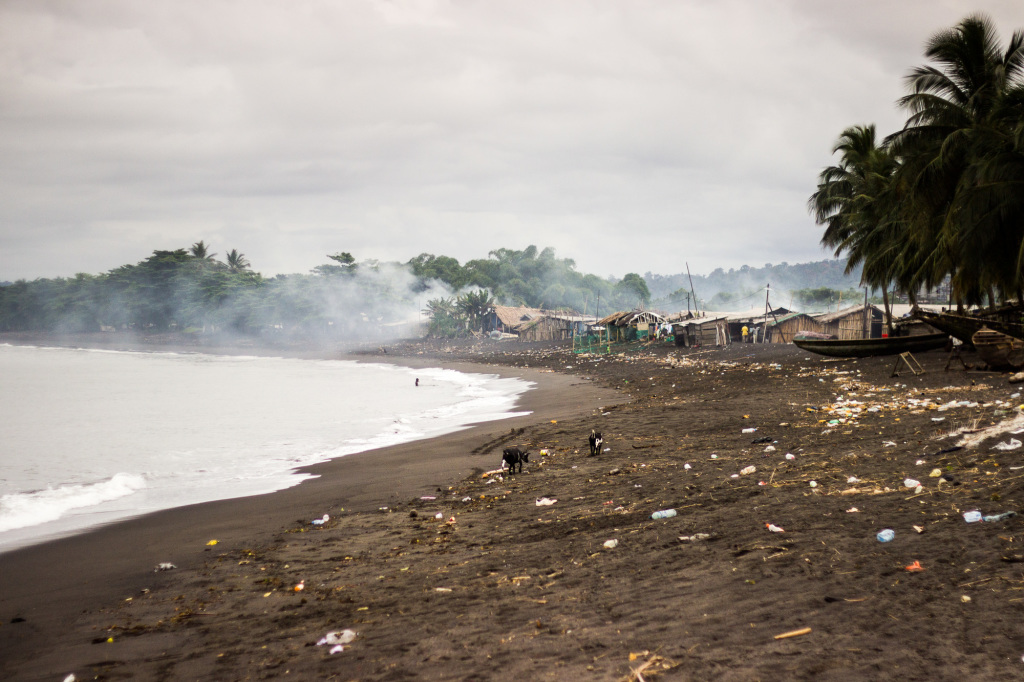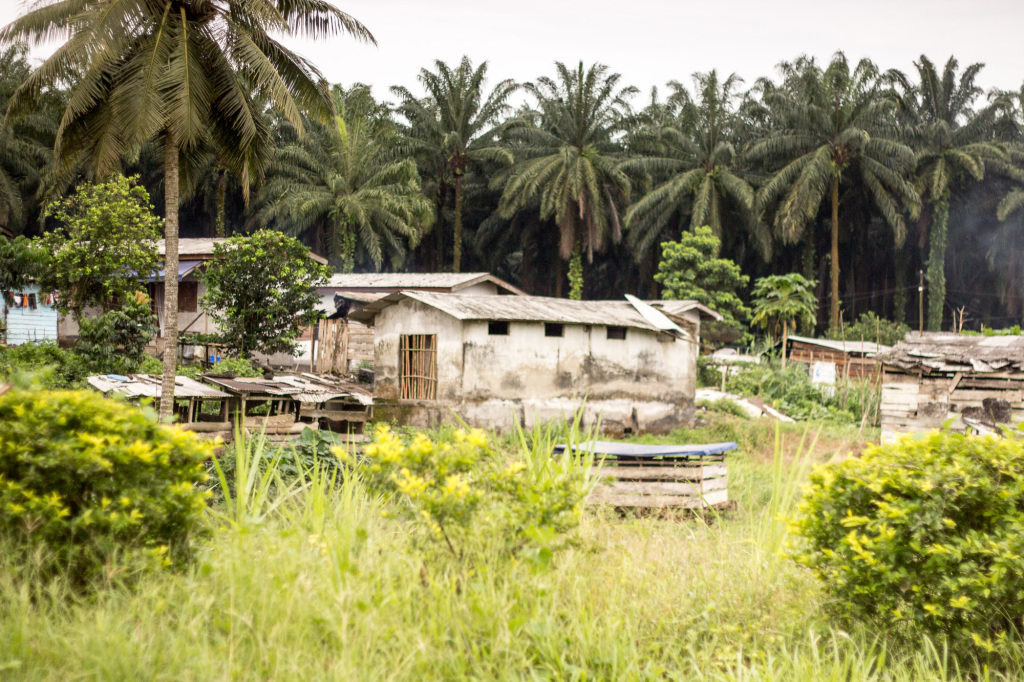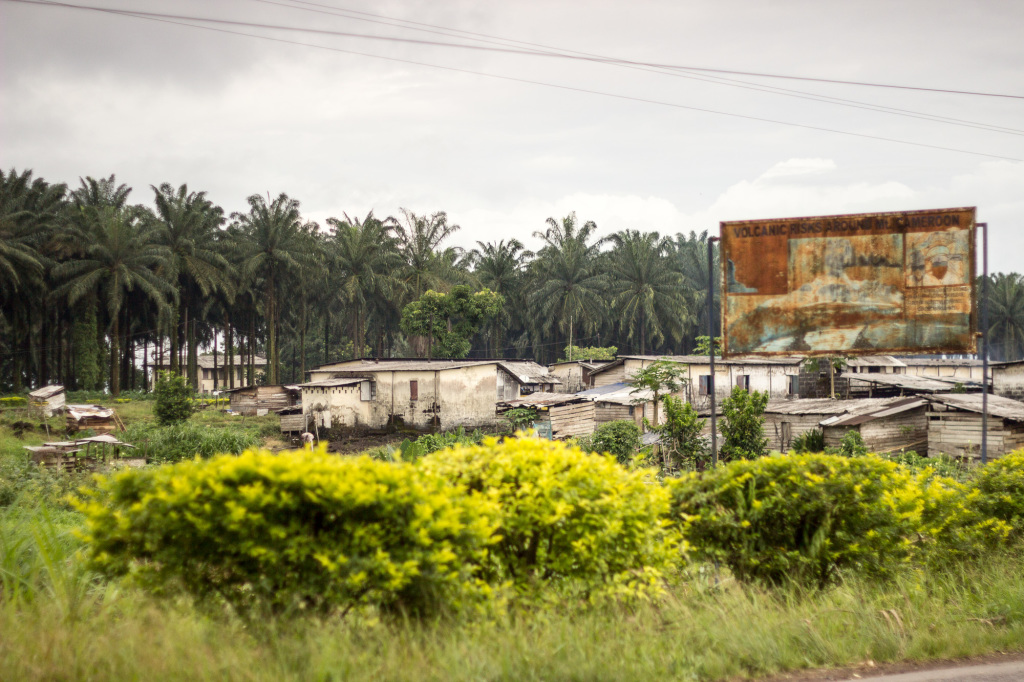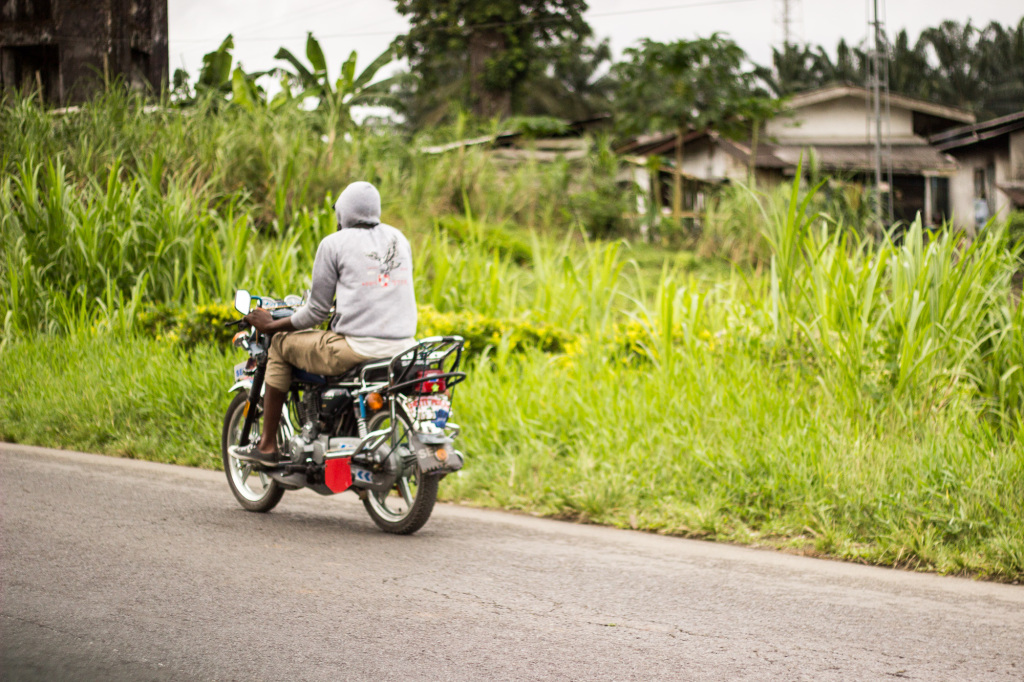Disclaimer time!
Please bear in mind, this is a westerners view of Cameroonian(or African) way of doing things. This does not mean that local way of doing things is wrong, it is different.
It’s strange to the extent that the mind cannot decide between farce and genuine help. Perhaps the truth resembles a small 100 francs silver coin, with its “heads” and “tails”. Maybe it’s not even a 100 francs coin, since that would make a reference to 100% effort, when actually the performance resembles more to a 25 francs coin. For small and tiny help you get in return the feeling of satisfaction, a blown-up ego and a few (too many) pictures that will remind you, every time you go into a crisis, of how humane you are and how much good you’ve done to the world. I wouldn’t have minded if they kicked us out of the place.
-Milena, Volunteer
On Tuesday, although it was supposed to be our training day, instead we visited two hospitals. And it was surreal. But let us start from the beginning.
We visited two hospitals. Both were first time receiving help from CcreadCameroon. The first one we visited with quite a big group of people and it was probably the most surreal thing I have experienced until now. It was all acted out like we were saving the world, only by giving them some basic stuff. It must be fake was the first thought I had watching this situation unfold in front of me. This is circus. Later though, considering how things are run here, I guess this is the way hospitals welcome all the gifts, because the helpers expect to be considered saving the world.
The second visit, gave me some more insight of what was wrong in the first visit. This time though, only four of us were visiting, three volunteers and one intern from CcreadCameroon. The head of the hospital was in the middle of letter to community asking help for some basic stuff and it felt way more sincere. He was more than helpful to show us around and tell us about how they run things. As there was only four of us, we also managed to get a better overview of the place. It was the common man hospital. They are missing almost everything, but they are still working. We gave them gifts of sterile birthing kits, but in reality what they need are beds, financing and running water.
So what went wrong in the first hospital? Well we arrived in big group of well dressed group of people, walking around with iphones and taking pictures like tourists. We looked like we are here to save the world. They acted as we expected them to act. In the second one, only I was taking pictures and I really tried to stay in the background. They mostly communicated with intern and had way more intimate conversation about hospital. They seemed sincerely happy to receive the things that we gave and we felt better giving them without expectations to save the Africa in return. I mean, my job will be documenting and taking pictures of these occasions, but this can be done without such a big fanfare.
And what is my conclusion? Well, things are happening and mostly the change is a good thing in this case. The culture might be different, but it shouldn’t be stopping people from trying to help. And at least we can all agree on the idea behind it, even when the way how something is done here does not fit straight away with me. Culturally different.
Going to save the world. Or that one common man hospital.
The room for giving birth.
There are hospitals with better equipment, but they also cost quite a lot more. A common man does not have money for the fancy hospitals.
This is what I think is the head doctor, asked to take pictures of us.
Going to the other hospital.
Laboratory wit Ebola expert and our spanish volunteer.
Pharmacy.
And the portraits of the other two volunteers
Ama from Spain
And Milena from Macedonia
The street our office is located. Notice it is paved!
These are on the street, counting your water usage.
[su_spoiler title=”Tõlge” icon=”plus-circle”]Sürreaalne maailma päästmise tsirkus
Vastutust välistava klauseli aeg.
Palun pidage meeles, et see on lääne inimese arvamus kuidas Kameruni (või Aafrika) moodi asju tehakse. See ei tähenda, et kohalike viis on vale, see on erinev.
On imelik, et mõistus ei suuda otsustada farsi ja ehtsa abi vahel. Võibolla tõde sarnaneb väikese 100-frangisele hõbemündile, oma “kulli” ja “kirjaga”. Võibolla see pole isegi 100 frangine münt, kuna see oleks viide 100% pingutusele, kui tegelik suutlikkus on võrdne 25-frangisele mündile.Väikse abi eest saad sa rahulolu tunde, ülepaisutatud ego ja mõne (liiga mitu) pildi, mis meenutavad igakord, kui oled kriisis, et kui humaane sa oled ja kui palju head oled teinud maailmale. Ma ei pahandaks, kui nad meid meie kohast välja viskaks.
–Milena, Vabatahtlik
Teisipäeval, kuigi see oleks pidanud olema meie koolituspäev, siis selle asemel me külastasime kahte haiglat. Ja see oli sürreaalne. Kuid alustame algusest.
Me külastasime kahte haiglat. Mõlemad said esimest korda CcreadCameroo-ilt abi (Tõlkija: CcreadCameroon on organisatsioon, mille kaudu antakse abi, praegusel juhul vabatahtlike näol.) Esimest haiglat külastasime suhteliselt suure grupiga ja see oli tõenäoliselt kõige sürreaalsem asi, mida ma kogenud olen praeguseks. See näis välja nii nagu me päästaks maailma, andes neile ainult elementaarseid asju. See peab olema võlts, mõtlesin ma esmalt, kui see situatsioon minu ees lahti rullus. See on tsirkus. Hilisem mõte, võttes arvesse kuidas siin asju aetakse, tundub, et see on viis kuidas haiglad võtavad vastu kingitusi, sest aitajatelt oodatakse maailma päästmist.
Teine visiit andis mulle rohkem vaadet seestpoolt, mis oli valesti esimesel külastusel. Seekord külastasime ainult neljakesi, kolm vabatahtlikut ja üks intern (Tõlkija: intern- katseajaga töötaja/väikse kogemusega) CcreadCameroon-ist. Haigla juht oli poole peal kirjaga, kus küsis kogukonnalt elementaarseid asju ja see tundus palju siiram. Ta oli rohkem kui abivalmis näitama haiglat ja kuidas neil asjad siin käivad. Kuna meid oli ainult neli, siis suutsime me palju parema ülevaate kohast saada. See oli tavalise inimese haigla. Neil puudus peaaegu kõik, aga nad siiski töötavad. Me andsime neile steriilse sünnituskomplekti kingitusena, aga tegelikkuses vajavad nad voodeid, rahastust ja jooksvad vett.
Kuid mis läks siis valesti esimeses haiglas? Me saabusime suures grupis hästiriietatud inimestega, kõndides ringi oma iphone-idega (Tõlkija: iphone=nutitelefon) ja tehes pilti kui turistid. Me paistsime välja kui oleks siin, et päästa maailma. Nad käitusid nii, nagu me ootasime, et nad käituvad. Teises haiglas, tegin ainult mina pilte ja üritasin jääda tahaplaanile. Nad enamasti suhtlesid interniga ja rääkisid palju detailsemalt haiglast. Nad tundusid palju siiramalt õnnelikud asjade üle, mis me tõime neile ja me tundsime ennast paremini andes neid, ilma ootuseta päästa Aafrika vastutasuks. Ma mõtlen, et minu töö saab olema dokumenteerimine ja piltide tegemine sellistel juhtudel, kuid seda saab teha ilma nii suure kärata.
Ja mis on mu kokkuvõte? No, asjad liiguvad ja enamasti muutus on hea praegusel juhul. Kultuur võib olla teine, kuid see ei peaks peatama inimesi proovimast aidata. Ja vähemasti me kõik saame nõustuda ideega selle taga, isegi kui asjad ei käi täpselt nii, nagu mina neid ette kujutan. Kultuurselt erinev.
[Piltide alused tekstid]
Läheme maailma päästma. Või seda ühte tavalise inimese haiglat.
Sünnitusruum
On haiglaid, kus on parem varustus, kuid need maksavad ka märgatavalt rohkem. Tavalisel inimesel pole raha peene haigla jaoks.
Ma arvan, et see on peaarst, ta küsis kas saab pilti meist teha.
Teel teise haiglasse.
Laboratoorium Ebola experdiga ja meie hispaania vabatahtlikuga.
Apteek.
Kahe teise vabatahliku portreed.
Ama Hispaaniast.
Ja Milena Makedooniast.
Tänav, kus meie kontor asub. Pange tähele, see on asfalteeritud!
Need on tänavatel, mõõtes vee kasutust.
123test[/su_spoiler]
